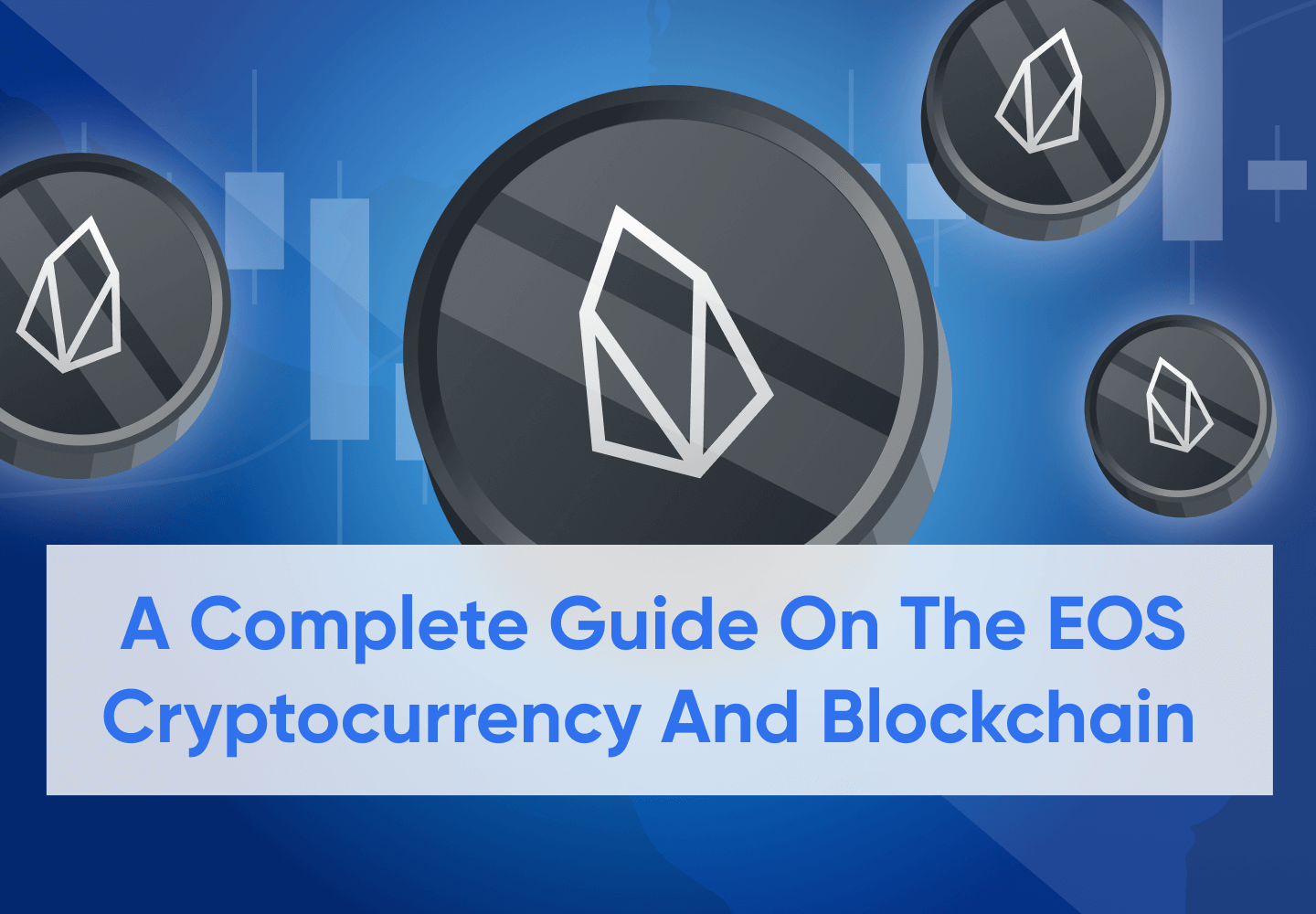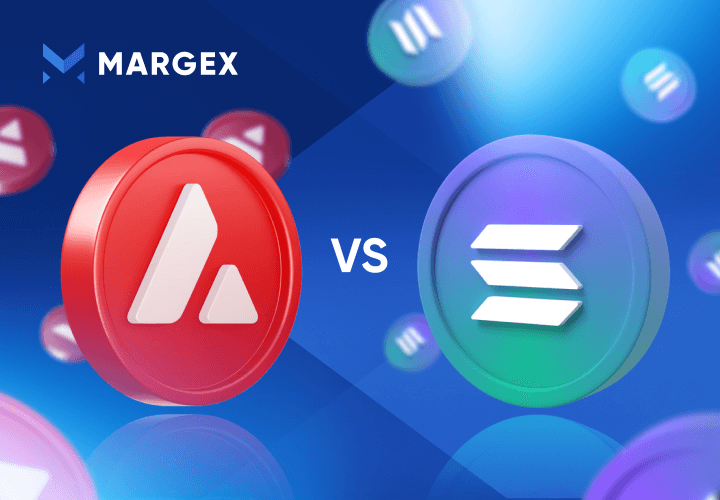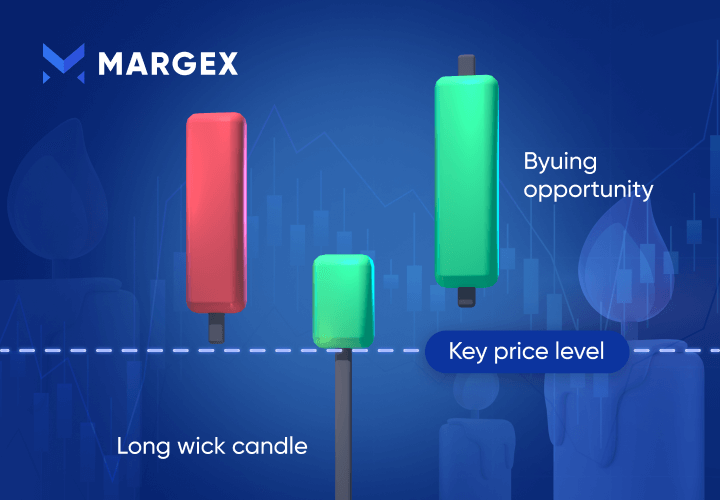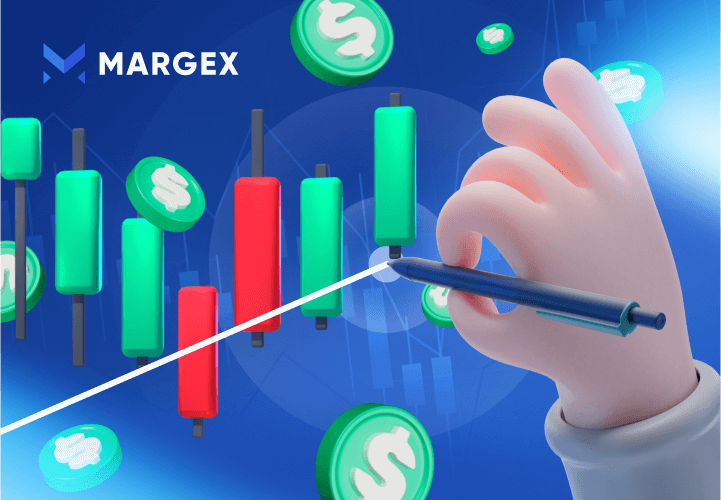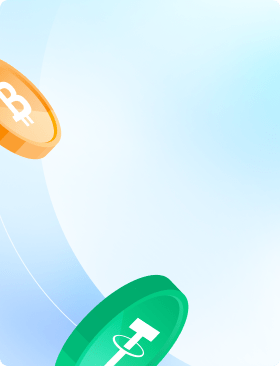EOS is a blockchain designed to make it easier to run a new type of program known as a decentralized application (dApp).
EOS's primary goal is to provide a user-friendly and business-friendly tool for developing dApps while overcoming the limitations of traditional blockchain platforms such as Ethereum.Scalability is one of the most significant barriers to the adoption of blockchain technology.For example, the current transaction rate with Ethereum is extremely low. Furthermore, users must pay the Gas fees to use any of the dApps built on the platform. This is ineffective because users will be unwilling to use a system that requires them to pay a transaction fee at every step.
EOS uses vertical and horizontal scaling to make its applications free for users (done by block producers). It also provides a secure and scalable platform for running thousands of transactions per second.
How Does EOS Work?
The EOSIO blockchain is intended to mimic the performance of a real computer, and the software employs some basic computing concepts.
The EOSIO blockchain, for example, is powered by three types of resources. They are Bandwidth (Disk), which is required for relaying information across the network, Computation (CPU), which is required to run a dApp; and State Storage (RAM), which is used to store data on its blockchain.
EOS is required to purchase all three of these resources on EOSIO, implying that developers must purchase EOS to run the dApps they create.
Notably, EOSIO-based dApps do not charge users for transactions, making EOS free to transfer for dApp users. However, on EOSIO, these costs are simply passed on to dApp developers, who must pay for network resources.
Delegated Proof-of-Stake (DPoS): EOSIO employs a system known as delegated proof-of-stake to secure its blockchain (DPoS).
To determine who can create the next block on its blockchain, DPoS employs a real-time voting and reputation system. This means that anyone who owns EOS can contribute to the network's operation; however, the more tokens you own, the more likely you are to be selected by the software.
Each EOS token can be "staked" to represent one vote that can be used to support platform development.
Governance: EOSIO takes a more active approach to governance, with features that allow users to vote on and change the software's rules. A user who owns EOS can vote on decisions, and block producers are responsible for making approved decisions. Both groups can vote on changes to the "EOS Constitution," a governing document that codifies the rules for all EOSIO users.
This gives EOS block producers significant control over network users. EOS block producers, for example, can freeze accounts. (To lock funds in an account, 15 of the 21 EOS block producers must vote.) This has led to concerns that the EOS blockchain's design could fall victim to centralized control and abuse.
EOS (EOS) History
EOS was published by software publisher Block.one, and development is led by CTO Dan Larimer, who founded Steem ($STEEM) and BitShares ($BTS). Other well-known smart contract platforms include Ethereum ($ETH), NEO ($NEO), and Cardano ($ADA). EOS attempts to distinguish itself by offering transaction throughput capable of handling thousands of transactions per second without requiring direct fees, improved usability for all parties involved, and governance for business and chain maintenance.
EOS employs on-chain governance, which allows token holders to vote for block producers (BPs) and various protocols, monetary policies, and stakeholder bylaw updates. The user bylaws are defined and enforced by the EOS User Agreement. The rules are not enforceable at the protocol level but instead serve as a terms-of-service agreement to which users must agree. By a majority BP vote in April 2019, this community-developed agreement replaced Block.one's Constitution.
EOS raised a whopping $4.4 billion in a record-breaking ICO, making it the largest token sale. This figure makes Ethereum's $18.3 million ICO appear insignificant. Interestingly, the tokens were issued on the Ethereum blockchain during the ICO. EOSIO was still non-existent at the time.
Since making headlines with its multibillion-dollar crowdsale, EOS has faced several challenges, including a $24 million SEC fine and community disagreements about the blockchain's future direction.
Nonetheless, EOS has remained strong and has a dedicated community eager to focus on what the project can bring to the crypto space: scalability and efficiency. EOSIO has low transaction fees and fast transaction speeds.
What Makes EOS So Unique?
EOS is viewed as a direct competitor to Ethereum, with goals of being bigger, better, and faster. EOS aims for millions of transactions per second, whereas Ethereum can reportedly handle 15. It is important to note that this is a goal, not a reality.
With the size of the DApps ecosystem on blockchain networks growing by the day, the limited availability of resources is becoming a major issue. EOS.IO addresses these issues through its unique mechanism by increasing scalability, flexibility, and decentralization.
Scalability: One of the most difficult issues with cryptocurrencies is balancing decentralization and scalability. The EOS ecosystem can process approximately 1 million transactions per second thanks to its Delegated Proof of Stake (DPoS) consensus mechanism. Through parallel processing, the EOS project achieves such a high throughput.
Flexibility: Unlike Ethereum, which could be a victim of DAO attacks, EOS has devised a solution to this issue. The platform can halt the node processing such a transaction and resume processing new transactions only after the issue has been resolved.
Decentralization: While Ethereum is frequently referred to as a decentralized supercomputer, the EOS platform could be considered a decentralized operating system.
What Gives EOS Value?
EOS's value stems from its ability to serve as a smart contract and dApp development platform. Because of this feature, it is one of the few platforms that can be considered a "complete package deal."
Furthermore, its token economy and structure enable its users to actively participate in decision-making, a feature many in the blockchain space value.
Bitcoin (BTC) vs. EOS (EOS)
Bitcoin uses the Proof of Work model, which ensures the network's stability by making mining or recording transactions difficult. This process, however, is very energy-intensive and not very scalable.
EOS is based on the Delegated Proof of Stake (DPoS) consensus mechanism, a variant of the traditional Proof of Stake (PoS) system. DPoS evolved from PoS and allows network users to elect delegates who validate blocks. DPoS, as opposed to PoW, is more scalable and requires less energy.
How Many EOS Coins Are In Circulation?
The supply of any asset, including cryptocurrencies, influences the price. Therefore, the supply of a token can inform investors about whether there will be enough demand to support future price gains.
The total supply of tokens created when EOS was created was one billion. 20% of this supply was sold in an ICO with Block.one keeping 10%. The remaining tokens have been added to the market via ongoing sales.
EOS is a token that is inflating. The supply grows at a rate of 5% per year. Because of the nature of the supply of EOS tokens, the true value has yet to be realized because the supply will continue to increase.
The fact that the supply of EOS tokens will continue to grow does not sit well with investors. Investors are drawn to assets with a limited supply because they believe there is potential for long-term gains as demand grows. However, if there is a high demand, EOS can also grow.
How Can Crypto Investors Use Eos Crypto?
EOS is currently ranked eighth among the top ten crypto assets, with the most favourable long-term outlook and expected growth among the market's best cryptocurrencies. In addition, EOS investors have received a 244% ROI, with prices hovering around $ 3.50 per coin from ICO issuance to current prices.
Below are some of the ways investors can use EOS and make profits.
Mining
EOS uses a staking system that is a better and less energy consuming than the traditional mining system.
Staking
EOS staking provides a way for holders to make profits without the risks associated with trading formats (spot, futures and margin trading). The actual profit from what you get is determined by how much you keep and how long it lasts.
You "park" your tokens when you stake your EOS. Therefore, they will not be available until you unstake your tokens. Staking in EOS is necessary because it provides your account with the resources (CPU and NET) needed to perform any function on the blockchain.
Leasing
Token leasing is not particularly profitable, as EOS is still in its early stages.However, as the network matures and resources become more expensive (recalling the earlier "digital real estate" analogy), the costs for Dapp developers to run their applications on EOS will rise.
The rising cost of resources will boost the viability of token leasing. Currently, the market demand for leased tokens is very low (you'll likely only receive.5% for leasing your tokens for three months). Still, as demand for network resources increases over the next year/s, token leasing will become increasingly profitable.
Trading
EOS can be traded by purchasing it on an exchange such as Margrex or by taking a derivative position. If you purchase EOS on a cryptocurrency exchange, you do so with the expectation that the price will rise and you will profit.
To purchase EOS on the Margrex exchange, you must first open an account and fund it using either Bitcoin, visa or MasterCard. This procedure is straightforward.
Create a user profile;
Fill out the needed information on the Sign-up page. "Register" is the only option. You'll get an email to confirm your registration. To finish account registration, open this email and click on the confirmation link.
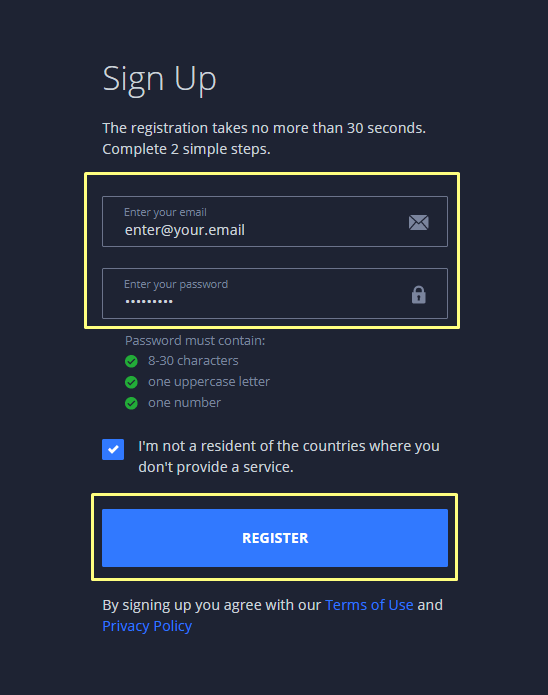
Deposit
Margex accepts the following payment options at this time:
- Directly transfer cryptocurrency to your Margex wallet from another address.
- Use Changelly or Changenow to buy cryptocurrency using a bank card.
- Making a deposit is as easy as the following:
Add a deposit to your Wallet by clicking +Deposit:
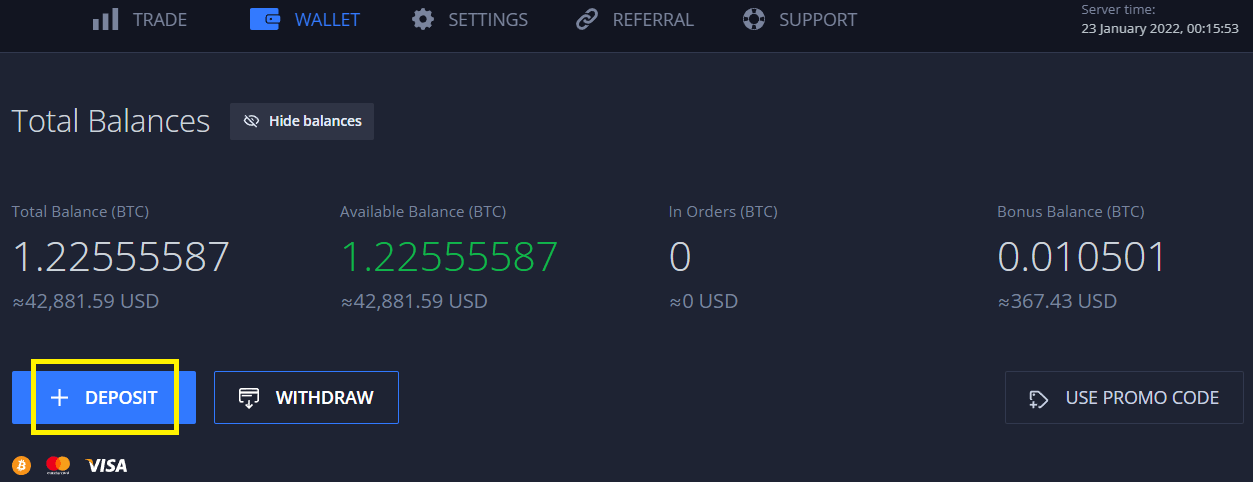
Select a stablecoin (USDT,DAI) as the currency that you want to deposit from the drop-down menu:

simply copy the Margex deposit address and paste it into the site/destination wallet's box. Once you've clicked the "Buy Crypto" button, follow the steps given to complete the transaction.
Navigate to the Trade Page. Select the EOS/USD trading pair to begin trading your stablecoin for EOS.
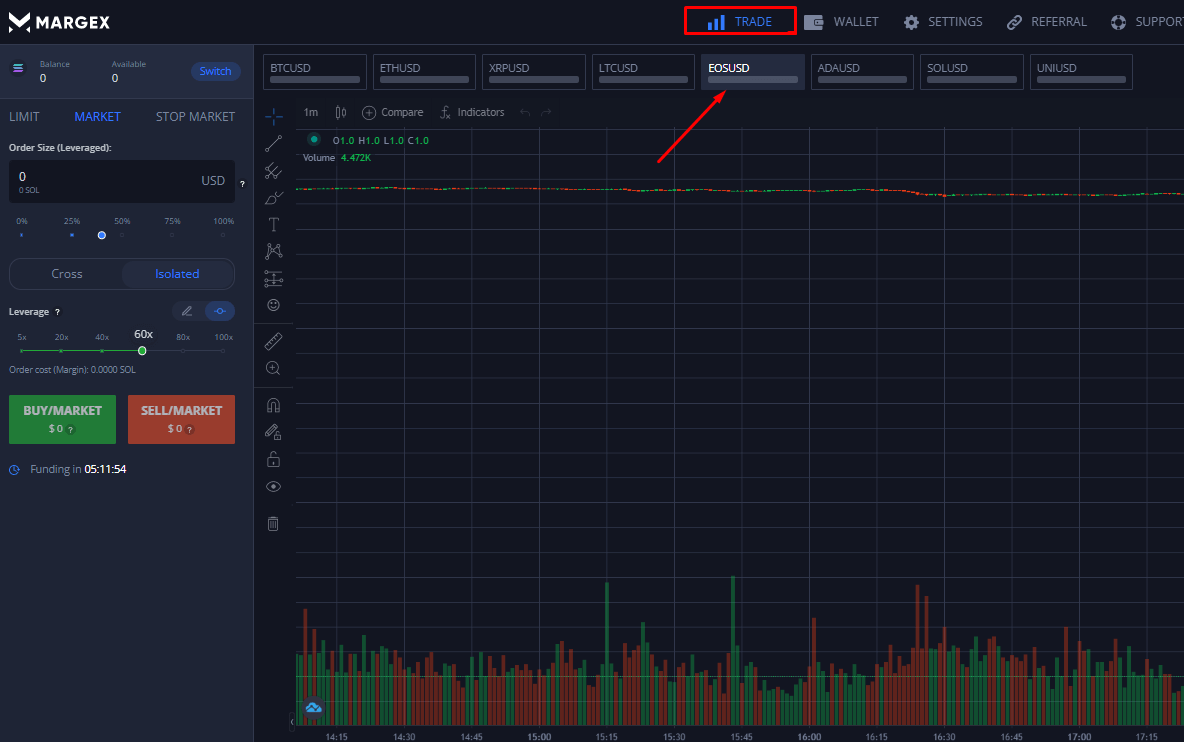
When placing an order, choose your preferred criteria;
- Collateral currency
- Trading pair
- Order type
- Order size
- Leverage
FAQ
What is EOS and how does it work?
EOS is a blockchain-based platform for creating business applications, or DApps. EOS supports secure access, authentication, permissions, data hosting, usage management, and DApp-to-Internet communication. The system architecture is EOS.IO.
Is EOS is a good investment?
In the long run, EOS is a good investment. However, if you are looking for a short-term investment, EOS is not a good choice. Your investment decision will be based on your price analysis, fundamental analysis, and future blockchain technology situations.
How is EOS different than Bitcoin?
EOS is based on the Delegated Proof of Stake (DPoS) consensus mechanism, allowing network users to elect delegates who validate blocks. This is a variant of Bitcoin's traditional Proof of Work (PoS) system, which ensures the network's stability by making recording transactions difficult. In addition, DPoS, as opposed to PoW, is more scalable and requires less energy.
Does EOS have a future?
The blockchain technology underlying the EOS.IO protocol has the potential to drastically alter the future of computer resources and applications, as well as improve several businesses and industries. EOS's long-term value may increase exponentially due to its powerful impact.
Is EOS better than Ethereum?
In terms of total ROI, Ethereum currently outperforms the other asset. However, the situation changes regarding which will be more profitable in the short or long term. We'll go over this in more detail in the sections below.
Why is EOS so valuable?
EOS is worthwhile because it is currently one of the most promising blockchain technologies. It is faster and more scalable than Ethereum or Bitcoin, and it is more established and thus more trusted than the majority of the other blockchains vying to replace Ethereum.
Is EOS a good cryptocurrency?
The value of the EOS cryptocurrency is determined by the rest of your investment portfolio and your personal opinion of the coin. Many on the cryptocurrency market believe it is a good investment, but you should always DYOR before purchasing it.
How does a EOS make money?
You can make money from EOS in several ways, including mining, trading, lending and staking.
